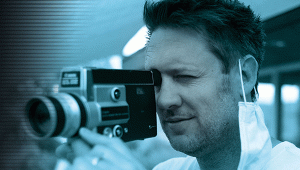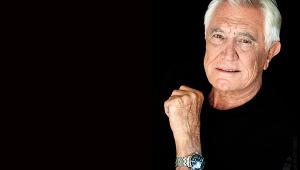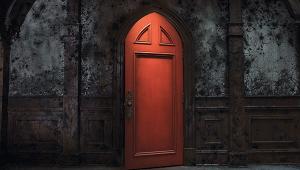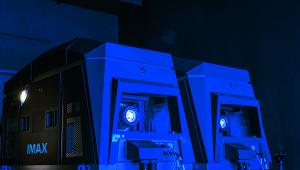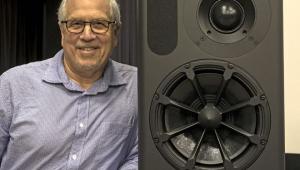'We don't want to make me-too products' – talking subs and speakers with Perlisten

US sound brand Perlisten Audio launched its first models in 2020, during a global pandemic. Despite such a rocky start, the company – which became the first in the world to sell speakers and subwoofers certified THX Dominus – has quickly become an established player on the high-end audio scene, with a range now covering the home cinema, custom install and hi-fi markets. HCC, in advance of auditioning its new R18s subwoofer, met up with CTO Erik Wiederholtz for a chat.
Starting with the R18s subwoofer, this is your first with an 18in driver – when did you begin work on it?
I think that was about a year ago. When we started looking at it, there was a request for lower price points. We're definitely a higher price-point products [company], but we believe in making sure that you get what you pay for and that we're actually delivering value for the price. If we can't do that, then that's not a product we should do, or we need to keep researching to make that happen.
The R18s is a home theatre kind of sub, with the more applicable output capabilities of an 18in driver. So that began the process. It completes the whole series from the R10s on up, and we're looking at adding – due to requests – an R8s as well, with an 8in driver.
Presumably you had to start from scratch on the woofer?
Yeah, that was something that we hadn't developed at this point in time in our product line. We kind of do everything from the ground up, from voice coil motor linearity to the design of the spider and surround. Then the verifying of that was from simulations using Klippel – so, real world data. What we thought we were getting, are we really getting? Because that's the magic in the real world.
One of my favourite quotes is 'all models are wrong, but some are useful'. And so, when you do simulations, what you really get is: 'Are these what I thought I was gonna produce? Is that actually what's coming out?' That's where Klippel does a great job of making sure we're doing what we hoped we'd be doing.

Is the DSP platform the same as your flagship D series?
It's the exact same platform. We don't degrade any of the processors or the processing. And this is all homegrown, from Stephen Mascenik, our DSP and electrical engineer.
We do a lot of the work internally, and we do things a little differently on limiters and stuff like that, which is kind of cool. But we don't degrade that from the D series down to the R series. The only difference is we go to single input – single RCA, single XLR.
That's literally the only difference [with the DSP]. The actual amp platform internally is a step down in terms of power output capabilities – the R18s is 1,000W. But we still use the same Class D amp modules, that Steve has designed, and we design our own power supply as well.
Once a sub is modelled and built, are there certain films or pieces of music that you like to play during the evaluation process?
There are always the torture tests. What happens in subsonics? What's the distortion at those frequencies? But we've really gotten good at the measurements equating to the torture test.
When you do enough products you start to say, 'Hey, if I can't reproduce this, I know I'm going to have trouble with this piece' – a movie scene or a 16Hz cannon shot or whatever the case is. Some subsonic pieces from Lucy, for example, or something like that.
So, does it limit nicely? Does it ever show excessive distortion? Our limiters are probably set lower than most people do [and] how we enable those allows us to not create a lot of distortion, because limiters obviously do. You're compressing the signal and you can create more distortion than you actually had if you just let the woofer go on its own naturally.
All your subwoofers have app control and manual calibration. Are there plans to add automatic EQ?
That's a great question. When we first developed it, we thought 'should we do this?' Because obviously, for a sub like our D215s, generally you'd have an installer who would come and would do it [the EQ] anyway. And though we do have quite a mix of pro and DIY customers, probably more than we ever originally expected of the 'DIY' people, with home theatre there's going to be bass management, there's going to be some sort of control/filter design from the processor.
The two-channel world is a little bit different, right? I think the biggest fear of a lot of purists in the two-channel world is: 'I'm going digital and then back to analogue'. But all the power, the parametric EQs, the phase control, plus pure delay up to 100 milliseconds... There's a lot of ways to incorporate those and virtually move a subwoofer or subwoofers around the room. And through DSP and overclock cycling, we run the DSP way faster than it actually needs to do the job. So we use every technique that we know to make sure there's very little delay through the sub, no matter how much processing you're doing.

Quite often a two-channel guy would say: 'I want my subs here visually, maybe two subs between the main speakers, or maybe they're both in the corner.' But that actually excites the exact same modes in the room; a sub might be better off virtually in the side or maybe virtually two-thirds in the back or some other instance, but visually they don't want it there. You can actually fake it by doing pure delay and saying: 'If from my seating position to that sub is, say, five milliseconds, and its three milliseconds from the one closer to my seating position, I can virtually, just by pure delay, move the sub back to the corner.' Now, you're blending out and exciting different modes and can blend in and average out frequency response. So that's like a 2.2-channel perfect world.
What we believe in is that EQ is always an improvement. If you have a resonance in a room, due to a standing room mode or something like that, EQ it down. But a lot of EQ processing and subwoofers... most of them are just a fancy auto EQ. And so at the time when we released the subs, we didn't think we had the capabilities or the time to say 'let's create something to Perlisten standards.'
It is definitely something we're looking at in the future because I think there is a real value, especially in that 2.1 or 2.2 world. There's more people starting to say. 'Yeah, that is an advantage.' So I think that's a path we want to go towards, looking at auto correction but doing it better.
And that would be in the app?
Yeah I think that would be with the app. You know, the microphones that are a lot of times incorporated in those type of products, they're not very good. I used to design microphones, and the phase error at low frequencies is tremendous, so just throwing a cheap electric like we do in a lot of AVRs or in tunable subwoofers is probably causing more error than it's solving.
Some home cinema enthusiasts want to do their own subwoofer EQ, rather than have it handled by an AVR. They want to have the chance to do a measurement and see what's going on...
A lot of people enjoy it. Then I have almost an equal amount of two-channel guys that I have a conversation with on the phone and say: 'If you're willing, are you competent with taking measurements? Have you ever used, like, REW? Because it's gonna be a learning curve. It's gonna take some time. So don't get frustrated.' Some have enjoyed it and some haven't, but we definitely know there's still a need for it.
Can you tell us about the in-wall subwoofer that was shown at Munich High-End this spring? When will it launch?
So that's a good question. We still have a little more development to do on that, finalising the drivers.
It's pretty thin, has eight drivers – eight-inchers – in a push-pull configuration and a fully aluminium enclosure. It's a force cancelling design, you can put your hand on it and it'll be massive output but you can feel almost zero vibration.
It can be flush mounted or it could be an on-wall installation, which I think would be a great solution behind transparent screens – just mount it on the wall. And it's about ten inches deep and would fit within two by ten studs in the US market. That's not necessarily such a big deal in the UK because you build very differently. It could also be positioned horizontally below a screen. A lot of the complaints about our in-room subwoofers is that they're too tall, so you might not be able to fit one underneath a screen – if you had limited space to the right and left – without it interfering. You can orientate this horizontally, you can orientate this vertically, you can do arrays.
In terms of our in-room models, it would be equivalent about to our D212s, so almost our top-of-the-line subwoofer. Massive output, way more than any other in-wall that you generally have seen in the marketplace.
Your website encourages people to become a 'Perlistener' – what sort of customer base do you have?
We have a lot of customers, I would say almost 30 per cent, maybe 40 per cent, who are two-channel and AV, but we see a lot of customers who have a two-channel system and want it totally isolated from their home theatre electronics – because they don't believe they have good enough DACs and sampling rates and all that stuff that they want. They want to have that in their two-channel system and they want to integrate both... but easily. So I think there's a lot of headway to make there. We have some good ideas in the future of how to make that a little more simpler.
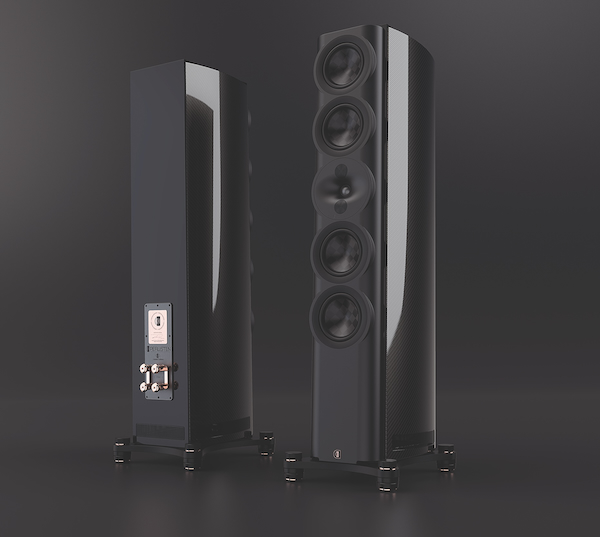
A final question: when you started you began with freestanding speakers and subwoofers, but you've since entered the CI market. Was that always the plan?
That's something that the company was looking at from the get-go. We're all 25-year vets, some of us even more. We've all worked a ton of places. We've done from 'this has to be a $100-cost speaker' to the level we're at now. So, speakers on space stations, outside submarines. We've worked commercial, we've worked automotive.
Hang on, did you say speakers
on a space station?
Yep, exactly. Also in tanks and all that. The submarine ones are on the outside, they have to pop up and still work. They're useful for when you're on deck and you need something to, you know, make whatever announcements they need to make. They're definitely not high-fidelity but they are high abuse!
There's almost no avenue and audio that we can't touch from experience or talent and that gives Perlisten a lot of options to hit different markets. So hitting the custom install market was definitely one of the evolutions, right? You can't, as you're a new brand, hit every market or aspect immediately and you kind of grow. We're definitely an organic, growing kind of company. That's what we believe in. The kind of the growth that's taken step by step, where we know where we can be good. It we can't offer something better or unique, then, why are we doing it? We don't want to make me-too products.
 |
Home Cinema Choice #351 is on sale now, featuring: Samsung S95D flagship OLED TV; Ascendo loudspeakers; Pioneer VSA-LX805 AV receiver; UST projector roundup; 2024’s summer movies; Conan 4K; and more
|

